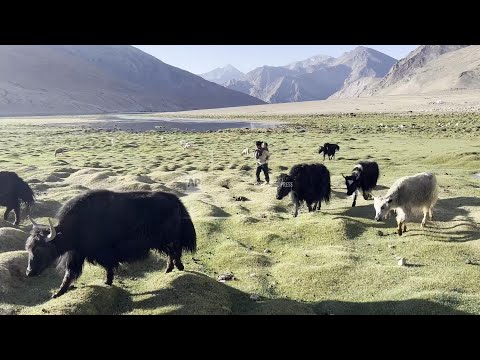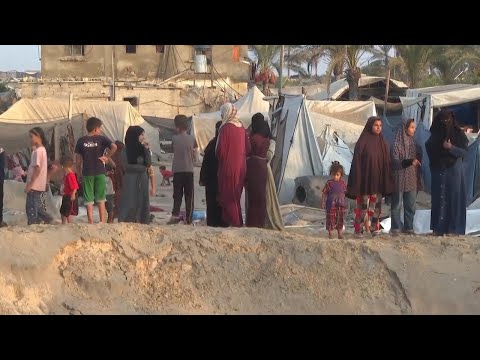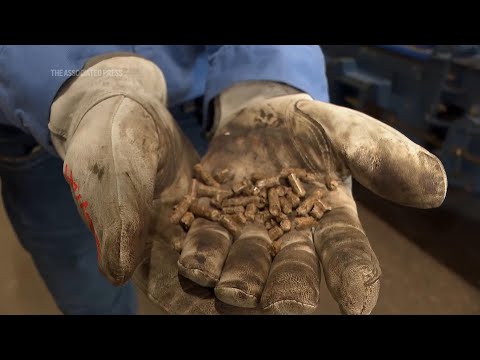(30 Jul 2025)
RESTRICTION SUMMARY:
ASSOCIATED PRESS
Ladakh, India – 07 July 2025
1. Wide of a herder herding yaks
2. SOUNDBITE (Ladakhi) Kunzang Angmo, yak herder: ++PARTIALLY COVERED++
“Earlier, there were a lot of yaks, but now there aren’t as many. There isn’t as much grass available as there used to be. It used to snow a lot before, but now the snowfall is decreasing, and due to less water, we have less grass available.”
3. Wide of Angmo walking with her son towards yaks
4. Mid of Angmo milking a yak
ASSOCIATED PRESS
Ladakh, India – 08 July 2025
5. SOUNDBITE (Hindi) Thering Norphel, former yak herder: ++PARTIALLY COVERED++
“These mountains here are now completely barren, earlier it used to be covered with snow (this time of the year) unlike now when only rocks are showing. That is why the number of yaks has depleted due to lack of snow and water during summers resulting in barely any grass,”
6. Wide of a herder walking near yaks
ASSOCIATED PRESS
Ladakh, India – 07 July 2025
7. Wide of a yak herder carrying away a yak hide for drying
8. Various of a woman weaving a blanket outside her tent
ASSOCIATED PRESS
Ladakh, India – 08 July 2025
9. Mid of a woman sieving curd using cheesecloth
10. SOUNDBITE (Hindi) Thering Norphel, former yak herder: ++PARTIALLY COVERED++
“It is getting difficult now (to find people for yak herding) as people go away to work in army and children go for studies.”
11. Various of a woman milking a yak
12. Various of yaks herding
STORYLINE:
Carrying her 1-year-old son on her back, Tsering Dolma herds a dozen yaks into a stone-walled corral as evening approaches in the desolate mountains of India’s remote Ladakh region.
A few herders tending livestock are the only people visible for miles on the wind-swept plains where patchy grass gives way to gravelly foothills and stony peaks. For generations, herders such as Dolma have relied on snowmelt that trickled down the mountain folds to sustain the high-altitude pastures where their herds graze. But now, herders say, the snow and rain are less predictable, and there is less grass for yaks to eat.
Much of the herding, milking and gathering of wool is done by women in Ladakh, an area near Tibet that was part of the ancient Silk Route. It’s work mostly done by hand.
In another valley, Kunzias Dolma is busy making tea with yak milk and checking her yak butter, while spinning her Buddhist prayer wheel with her right hand. The 73-year-old, who’s not related to Tsering Dolma, has spent her life around yaks, working long hours to make products from their milk and sewing blankets from their wool.
But that way of life is threatened as climate change makes Ladakh less hospitable to yaks and many in the younger generation seek other jobs.
Rising temperatures and erratic rainfall in the area have made it harder for yaks, which are related to bison and cattle, to find nourishing vegetation and have also exposed the shaggy, cold-loving animals’ bodies to more stress. Researchers have found that the average temperature in the Ladakh region has increased by 3 degrees Celsius (5.4 degrees Fahrenheit) in the last four decades, while heat waves have become more extreme and rains more unpredictable.
While it’s hard to precisely quantify climate change’s impact on yak numbers in the area, scientists say it appears to be a factor in their decline. The government estimates the yak population in Ladakh has fallen from nearly 34,000 in 2012 to fewer than 20,000 in 2019, the most recent year for which the data is available.
AP Video by Dar Yasin
Produced by Julián Trejo Bax
___
Find out more about AP Archive: http://www.aparchive.com/HowWeWork
Twitter: https://twitter.com/AP_Archive
Facebook: https://www.facebook.com/APArchives
Instagram: https://www.instagram.com/APNews/
You can license this story through AP Archive: http://www.aparchive.com/metadata/youtube/ab5070535a824d6f95d65a1780023162
Author: AP Archive
Go to Source
News post in August 4, 2025, 3:05 am.
Visit Our Sponsor’s:
News Post In – News





